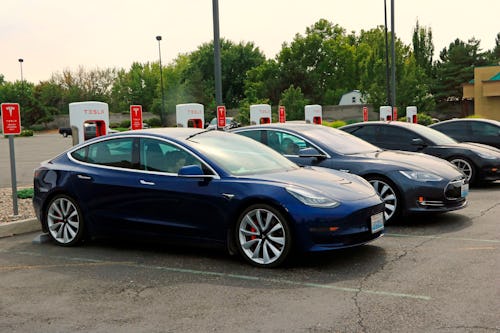
Consumers in the U.S. have taken longer than the rest of the world to warm up to electric vehicles, but we’re finally hitting our stride. More than five percent of all new auto sales in the last six months were all-electric vehicles, a market share Bloomberg analysts consider a “tipping point” for mass adoption.
While five percent may not sound like much, it’s proven to be a statistically significant point for other countries’ EV adoption rates. If current trends continue, the U.S. is on track for one-quarter of all new vehicle sales to leave the gas pump behind by 2025. This is, as Bloomberg notes, at least a year ahead of most experts’ forecasts for the country.
There are, of course, still obstacles to overcome before we can safely say the world as a whole is ready for a future of all-electric travel. Still, higher-than-expected adoption rates — along with much more choice for consumers — are enough for us to feel surprisingly optimistic amidst so much doom and gloom.
Behind, but catching up —
The United States is one of the largest automobile markets in the world, but we’ve long lagged behind other major markets in EV adoption rates. China, for example, hit this five percent mark back in 2018, and nearly a million EVs were sold there in Q1 2022 alone. We’re not the last to pass the five percent mark, though; Canada, Spain, and Australia are all still selling fewer EVs than the U.S.

The five percent line is less arbitrary than it sounds. As Bloomberg explains, technology adoption rates generally follow an S-curve pattern — a phenomenon long noted by market analysts. Technology is adopted slowly before accelerating rapidly. Just think of smartphones, for example; after being a relative luxury for years, they’re now owned by approximately 84 percent of households.
Thus far, 19 countries have made it to five percent before taking off. The goal, of course, is to be like Norway, where more than 83 percent of all new car sales were all-electric in Q1 2022. Norway hit the five percent mark in 2013, though.
Power grid cleanup —
The obstacles we face in using this new momentum to continue an upward trend are very similar to those faced by other countries around the five percent mark. There aren’t nearly enough EV charging stations across the country, for example, and all-electric vehicles are still generally more expensive than their gas-guzzling counterparts. Solutions to these problems will continue to grow more pressing — and will therefore garner more attention — as adoption rates keep rising.
On a more global level, though, there’s still plenty of work to be done for all-electric vehicles to be as environmentally neutral as possible. Much of the world’s electricity is still created by burning fossil fuels, which severely limits how clean our EVs can really be. The process of producing those vehicles is also rife with carbon emissions, not to mention all the rare Earth metals needed to craft EV batteries.







